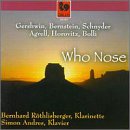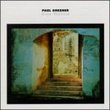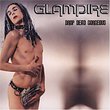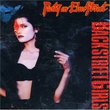| All Artists: George Gershwin, Leonard Bernstein, Daniel Schnyder, Joseph Horovitz, Frederic Bolli, Jeffrey Agrell, Simon Andres Title: Who Nose Members Wishing: 0 Total Copies: 0 Label: Gallo Release Date: 2/24/1998 Genre: Classical Styles: Chamber Music, Forms & Genres, Sonatas, Historical Periods, Modern, 20th, & 21st Century, Instruments, Reeds & Winds Number of Discs: 1 SwapaCD Credits: 1 UPCs: 034060995129, 7619918095126, 761991809512 |
Search - George Gershwin, Leonard Bernstein, Daniel Schnyder :: Who Nose
 | George Gershwin, Leonard Bernstein, Daniel Schnyder Who Nose Genre: Classical
|
Larger Image |
CD DetailsSimilar CDs
|
CD ReviewsReview from "The Clarinet" Lori Neprud-Ardovino | USA | 03/25/2000 (4 out of 5 stars) "Excerpts from the review in "Compact Disc Reviews" by Neprud-Ardovino, Lori in The Clarinet [Journal of the International Clarinet Association], Vol. 26, No. 1, Dec. 1998, p. 87-89.This CD represents works by both American and European composers, all living, except Gershwin and Leonard Bernstein, who died in 1990. All of the works are highly influenced by jazz, some more than others. The first two works, George Gershwin's Three Preludes and Bernstein's Sonata, are well known in the clarinet repertoire. The outer preludes are filled with lively rhythms and glissandi, while the middle slow movement has a bluesy flavor. The Bernstein is so well known that it needs no comment. Both pieces are performed exceptionally by Röthlisberger and Andres.Daniel Schnyder is a Swiss composer who moved to New York in 1991. He works with both jazz and classical musicians in order to achieve a "synthesis between the classical and African-American music traditions." The Sonata is an arrangement of his four-movement Sonata for soprano saxophone (1984). This version for clarinet and piano is recorded here for the first time. The first movement is fairly dense with some polyphonic sections and a middle ternary section. There is some use of multiphonics harshly portrayed, strongly articulated. There are definite jazz inflections used in this movement. The second movement, "Langsam/tempo rubato," is like a jazz ballad, a blues in the minor key throughout until the very end, where the duo moves to a major chord. The third movement is a lively scherzo, the clarinet plays very staccato, often following rhythms set forth by the piano. The movement is short, almost comical in character. The last movement uses a Latin jazz feel, introduced in the piano. The movement is short, almost comical in character. The last movement uses a Latin jazz feel, introduced in the piano. The two instruments modulate throughout the movement between major and minor. The other work on this disc by Schnyder, Who Nose (A portrait of Charles Mingus), is taken from a series of brief musical portraits of jazz greats. The clarinet plays in unison with the pianist's right hand for the entire piece. It is, perhaps, meant to sound improvisatory, yet is written out. The clarinet must be exactly in sync with the piano. This is the first recording of the clarinet version.The fourth of Joseph Horovitz's clarinet works, Sonatina, is written in the typical three-movement classical style. The first movement in sonata form is followed by a slow ABA which develops into a wonderful cantilena over slow chords in the accompaniment. The finale is a rondo, utilizing the clarinet in the altissimo register. This work is also highly influenced by jazz and popular music.The most exciting piece is Jeffrey Agrell's Aviary Divertimento (1997). This seven-movement work was written for Röthlisberger. Each movement depicts a particular type of bird. The first movement, "Hummingbird Toccata," is performed on Eb clarinet. The movement is an example of perpetual motion, very fast moving, with high trills. Somewhat larger birds, as in movement two, the "March of the Penguins," which is jazzy, heavier sounding, and almost plodding, is played on the Bb clarinet. In "Toucan Calypso" we imagine ourselves in a tropical paradise with the calypso fell prevailing. The movement begins with percussion effects using the body of the piano, soon enters the clarinet, accompanied by the percussive sounds. The right hand of the piano provides a very simple accompaniment. In "Raven's Blues," using the bass clarinet, Röthlisberger "crows" out the line with a distinct blues flavor. The movement is rough and aggressive. There is some use of multiphonics and slap tonguing. "Canary Cadenza" is rather high, yet songful, played on unaccompanied Bb clarinet, showing the skillful and virtuostic technique displayed by Röthlisberger. "Elegy for the Dodo" laments an extinct bird, with the clarinet rather rough, almost plodding in character. There is use of multiphonics and slap tonguing. "Blackbird Boogie" is true to the title, showing boogie-woogie figures in the piano. It is exciting and the clarinet is all over the range. The piano and clarinet trade twos toward the close of the movement, followed by a short fugal-like section. Of all the works on this CD, Aviary Divertimento is the most intriguing and overall fun. The performer must, however, be able to adjust to the various clarinets (Eb, Bb and bass) with relative ease, and be quite virtuostic on each. This is a new work and its first recording. Blues for D.D., also by Agrell, was originally for oboe and was dedicated to Diana Doherty. This three-minute arrangement was done in 1997 for clarinet and piano, and is also recorded here for the first time.This is an excellent CD, and I enjoyed listening to every selection. In order to perform most of the works, one must be knowledgeable of various jazz styles. Most of the works are technically demanding. Röthlisberger and Andres are an amazing duo. I look forward to hearing them again. I highly recommend this CD."
|

 Track Listings (22) - Disc #1
Track Listings (22) - Disc #1


